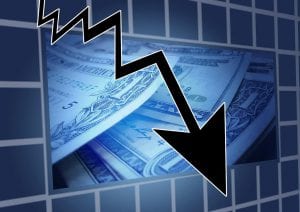
Which Is the Best Option for a 22-Year-Old Investing for Their Retirement? The Stock Market
April 12, 2024
When you’re 22, retirement seems like a distant reality. However, at this age, making smart investment choices can significantly influence your financial future. So, “which is the best option for a 22-year-old investing for their retirement?” The stock market offers compelling arguments, especially when considering the long-term growth potential and the ability to weather financial downturns.
With its inherent fluctuations and trends, the stock market offers a fertile ground for long-term growth potential and resilience against economic shifts. This might raise a pertinent question: Why should someone so young, possibly just starting their career, concern themselves with market investments and retirement plans? The answer lies in the power of compounding interest and the historical recovery and growth of markets post-downturn, which collectively forge a path toward significant financial security.
Niccolò Machiavelli, an Italian diplomat and philosopher, famously emphasized the importance of foresight and preparation. He argued that “whosoever desires constant success must change his conduct with the times.” This resonates profoundly with investment strategies, particularly for the young investor. Adapting to market changes and anticipating shifts rather than reacting to them can be the cornerstone of building a prosperous financial future.
Similarly, Bertrand Russell, a British philosopher and Nobel laureate, advocated cultivating a balanced life filled with diversified interests and activities. Translating this into investment terms, Russell’s philosophy supports the idea of a diversified portfolio. For a young investor, diversifying across different sectors and asset classes can mitigate risks and enhance the potential for returns. Russell might argue that a well-rounded portfolio reflects a well-rounded life, emphasizing the importance of not putting all one’s eggs in one basket but rather spreading them to optimize growth and security.
Therefore, engaging with the stock market at a young age is not just about investing money; it’s about investing in one’s future. It’s about recognizing the transient nature of market downturns and the enduring ascent of market recoveries. With youth on their side, 22-year-olds have the unique advantage of time, allowing them to ride out volatility and benefit from the upward trajectory of long-term market growth. This strategic approach to investing, underscored by the wisdom of historical and philosophical giants, provides more than just financial returns—it cultivates a discipline and vision that can guide young investors through the vicissitudes of life and finance.
Embracing Market Downturns: A Strategic Advantage
History has shown that market downturns, while challenging, can present unique opportunities for young investors. For instance, if we adjust $10,000 for inflation from 2000, the amount during the 1929 crash would be significantly less. Yet, those who invested during these low points and held onto their stocks saw substantial returns over the following decades. Similar patterns were observed during the 1987 crash, the dot-com bubble burst in the early 2000s, the 2008 financial crisis, and the recent Covid-19 market disruption.
These historical examples highlight a crucial strategy: with time on their side, young investors can afford to buy quality stocks at lower prices during downturns. This “buy low, sell high” approach is not just a cliché but a proven method of building substantial wealth over time.
The Power of Early Investments and Dividends
Investing early can be the most decisive factor in a successful retirement strategy. Starting in your early twenties allows your investments more time to compound and grow. An excellent approach to harnessing this growth is through dividend-paying stocks. These stocks provide regular income, which can be reinvested to purchase more shares, thus accelerating the development of your investment portfolio.
Warren Buffett’s investment in Coca-Cola exemplifies the power of dividends. Buffett’s initial investment now yields annual dividends that exceed the original purchase price, illustrating how dividends can grow exponentially over time.
Embracing Market Downturns, Harnessing Dividends, and Learning from Historical Wisdom
Navigating the complex landscape of investing requires a multifaceted approach that combines an understanding of economic forces, strategic risk-taking, psychological insights, and the wisdom of those who have successfully traversed financial markets. Inflation, often called the “silent thief,” can gradually erode the purchasing power of money, making early investment a critical component of financial planning. As Jonathan Swift astutely observed, “A wise person should have money in their head, but not in their heart.” This sentiment underscores the importance of making rational, informed investment decisions rather than being driven by emotional attachments to money.
One strategy to combat inflation is to allocate a portion of one’s portfolio to the stock market, where the growth potential can outpace the inflation rate. However, there is room for both conservative and speculative approaches within this realm. The Medici family, renowned for their financial acumen during the Italian Renaissance, understood the value of diversification. They spread their wealth across various ventures, from traditional banking to speculative investments in art and exploration. This approach allowed them to weather economic uncertainties and maintain their prosperity over generations.
Similarly, modern investors can benefit from allocating a small portion of their portfolio to speculative investments, such as cryptocurrencies or emerging tech companies. These high-risk, high-reward ventures can yield substantial returns, particularly for young investors with a longer time horizon to recover from potential losses. As the famous Rothschild family motto goes, “Buy when there’s blood in the streets.” This contrarian approach, when applied judiciously, can lead to significant gains.
However, success in the stock market is not merely about picking the right investments; it also involves understanding market psychology and utilizing technical analysis tools. As H.L. Mencken noted, “Nobody ever went broke underestimating the intelligence of the American public.” This cynical observation highlights the importance of understanding mass psychology and its impact on market trends. Tools like Moving Average Convergence Divergence (MACD) and Stochastics can help identify optimal entry and exit points by analyzing market trends and investor behavior. During the 2008 financial crisis, for example, savvy investors who used these tools to identify recovery signals were able to maximize their gains as the market rebounded.
Ultimately, successful investing is a blend of art and science, requiring technical knowledge, psychological insight, and the wisdom of those who have thrived in the face of financial adversity. As Peter Lynch, one of the most successful investors, advised, “Know what you own, and know why you own it.” This simple yet profound statement encapsulates the importance of conducting thorough research, understanding one’s investments, and having a clear rationale for each investment decision.
By embracing a multifaceted approach that combines strategic diversification, an understanding of economic forces like inflation, the judicious use of speculative investments, and applying technical analysis and market psychology, investors can navigate the complexities of the financial world with greater confidence and success. As the Barons Rothschild family has demonstrated over centuries, wealth can be preserved and grown through prudence, adaptability, and a willingness to seize opportunities when they arise.
Conclusion: Which Is the Best Option for a 22-Year-Old Investing for Their Retirement?
So, which is the best option for a 22-year-old investing for their retirement? With its potential for high returns, ability to hedge against inflation, and suitability for long-term growth, the stock market stands out as a compelling choice. By starting early, embracing the market’s cyclical nature, and applying a mix of strategic investment practices, young investors can set a robust foundation for financial security in their later years.
Remember, the journey to a prosperous retirement is marathoned, not a sprint. Making informed, strategic decisions early on can make all the difference, ensuring your golden years are as golden as possible. With the right approach, the stock market provides the tools and opportunities necessary for substantial and sustained growth.
Inspiring Fresh Thoughts: Thought-Provoking Reads

SOS: Distress Signals from the American Economy in Trouble
Alarming Surge in Sexual Violence in Germany

Embracing Investing Psychology: Profiting from Negativity

Corn-Eating Hamster Cannibals: Unveiling the Mystery

Food for Thought Meaning: Exploring Intellectual Depths

Fragile Foundations: Central Banks Assault on Strong Currency
Chinese Recession 2016: Examining Its Impact on the Markets

Unveiling Mass Hysteria Cases: Insights into Noteworthy Examples

What is a Hedge Fund: Beyond the Basics, Embracing Volatility

Home Run with Homeschooling Ideas
Americans with No Emergency Funds: Progress & Challenges

Hookah Lounge: A Captivating Experience for Relaxation and Socialization

Anxiety Sensitivity Index Does Not Support Stock Market Crash

Unveiling the Silent Threat: Women and Heart Disease

Homeschooling Benefits: A Comprehensive Guide
FAQ: Which Is the Best Option for a 22-Year-Old Investing for Their Retirement?
1. Why is investing in the stock market a good option for a 22-year-old planning retirement?
Investing in the stock market at a young age is beneficial because it offers long-term growth potential and the ability to handle market downturns more effectively. Starting early allows for more time to benefit from compounding interest and dividends, which can significantly increase the value of investments when retirement comes around.
2. How can investing during market downturns be advantageous for young investors?
Market downturns often allow investors to purchase stocks at lower prices. For a 22-year-old, this presents a unique opportunity to buy quality stocks cheaply and hold them over time as their value increases. Historical data from events like the 1929 crash, 1987 crash, and 2008 financial crisis show that markets typically recover and grow over time, benefiting those who invest during downturns.
3. What is the significance of speculative investments for young investors?
Speculative investments, such as cryptocurrencies or new tech startups, carry a higher risk and the potential for high rewards. For young investors, allocating a small portion of their portfolio to these investments can be advantageous. Since they have a longer time horizon to recover from potential losses, they can afford to take on more risk, which could lead to substantial gains.


